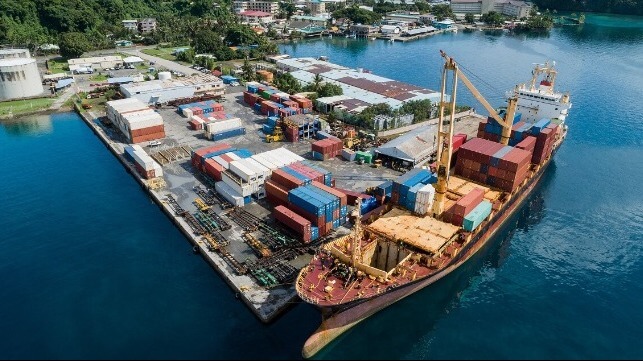UN: Investments to Combat Delays, Consolidation, and Aging Fleets

Increased investment is required all across the maritime supply chains to better prepare for future global crises and to continue the emergence of developing economies says a new report from the UN Conference on Trade and Development (UNCTAD). The agency, which focuses on economic development, cites the disruptions caused by the pandemic as well as the trends in the shipping industry saying that investments are needed in the maritime transport systems.
The report cites the mismatch between demand and supply of maritime logistics which it says was brought to light during the pandemic. They highlight the global dependence on maritime transport which they say is at its highest for most developing countries and poses one of the greatest risks for the future.
"We need to learn from the current supply chain crisis and prepare better for future challenges and transitions,” said UNCTAD Secretary-General Rebeca Grynspan. “This includes enhancing intermodal infrastructure, fleet renewal, and improving port performance and trade facilitation. And we must not delay the decarbonization of shipping.”
They are forecasting that global maritime trade growth moderated in 2022 to an expected rate of just 1.4 percent compared to the better than 3 percent estimated growth in 2021 and a three-decade average of 3.3 percent. Going forward they are forecasting that the growth will remain at a similarly low level for 2023 and predicted slow growth for the next five years averaging just over 2 percent annually.
"If there is one thing we have learned from the crisis of the last two years it is that ports and shipping greatly matter for a well-functioning global economy," said Shamika N. Sirimanne, director of UNCTAD’s technology and logistics division. "Higher freight rates have led to surging consumer prices, especially for the most vulnerable. Interrupted supply chains led to lay-offs and food insecurity."
The report, however, also raises concerns about the shipping industry citing both the age of vessels and the impact consolidation is having on trade. They calculate that the average age by the number of ships has risen to 21.9 years while by carrying capacity it is now 11.5 years. Investment they believe has been slowed in new ships in part by the wait for a global framework for decarbonization and in part by the consolidation in segments of the shipping industry.
Container shipping for example the report says has been transformed by horizontal consolidation through mergers and acquisitions. They calculate that between 1996 and 2022, the top 20 carriers increased their share of container-carrying capacity from 48 to 91 percent. Today they believe just 10 carriers dominate the industry with the reporting highlighting that over the past five years, the four largest carriers increased their market shares to control more than half of the global capacity.
The consolidation is having a negative effect especially on smaller, developing states. They point out that the number of companies providing services to importers and exporters fell in 110 countries, with some small island developing states dropping from two to just one carrier.
UNCTAD calls on countries to carefully assess potential changes in shipping demand, develop and upgrade port infrastructure and hinterland connections while involving the private sector. The report says they should also bolster port connectivity, expand storage and warehousing space and capabilities, minimize labor and equipment shortages. UNCTAD also suggests that Many supply chain disruptions can also be eased through trade facilitation. They write that digitalization will cut waiting and clearance times in ports and speed up documentary processes through e-documents and electronic payments.
The report and its online annexes provide an extensive collection of statistics from maritime trade and an analysis of structural and cyclical changes affecting seaborne trade, ports, and shipping.
